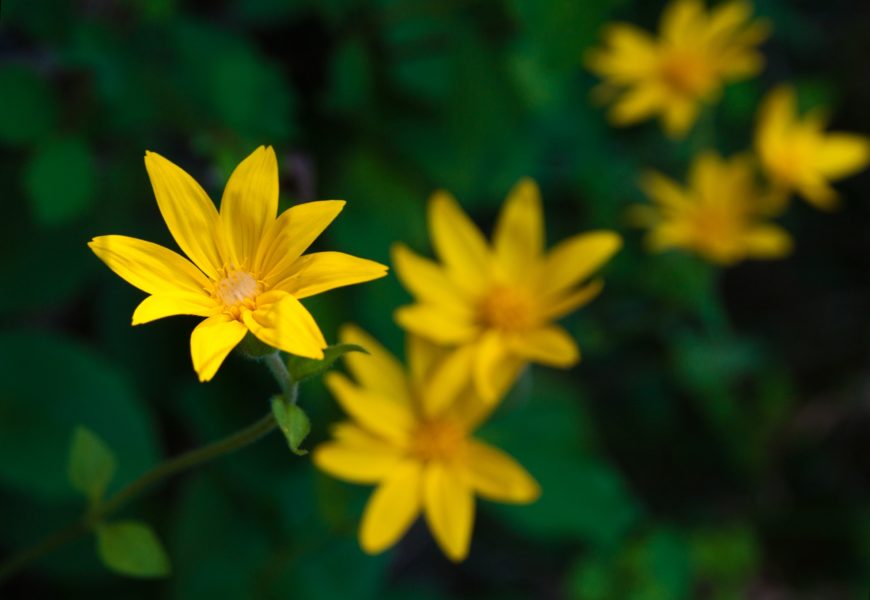I love flowers. They are the most defiant things in the world. Somehow, in all the utilitarian requirements of survival, in all the necessities of metabolism and photosynthesis and in the harsh contest of evolution, we have flowers: exquisite in symmetry and colour, defying all the ugliness of the world, catching our breath, making us stop a moment, be for a moment, seeing, listening.
They are speaking to us. “See?,” they’re saying. They too face hardships. They too are born, live briefly, and die. But in that little span between, they shine with unabashed radiance, beautifying the world. We can learn from them.
Flowers pay their due to evolution, of course; they serve a function, attracting pollinators, advertising nectar. They have to be practical, just like the rest of us, but have you ever stopped to ponder the generosity of a universe that creates the necessity of flowers? What a sly and awesome thing is nature to create so much beauty in the guise of survival.
Arnica is a mountain wildflower. It grows on the hillside where I spent my youth. It grows thickly beside the boulder under which a rabbit lived one winter; fewer flower down beside the bridge on our steep driveway, in the spot where my brother’s truck stayed after it tried and failed to deliver grandma’s piano to the house one winter.
My mother makes medicinal oils from the flowers of Arnica; they have soothed the many errors and injuries of childhood, along with the care with which they were prepared, and the maternal compassion with which they were applied. Here, wild Arnica cannot be taken for granted, just like the sun in May, or the creek in August. Some years they flower, others they don’t. It depends on the weather, no doubt, and on a thousand secret factors that only Arnica know.
Flora of North America describes it thus: Perennials, 5–100 cm (rhizomes relatively long and thin; caudices woody, relatively short and thick). Stems erect, simple or branched. Leaves basal (sterile basal rosettes often present) and/or cauline; mostly opposite (usually 1–10 pairs, distalmost sometimes alternate and usually smaller); petiolate or sessile; blades mostly cordate, deltate, elliptic, lanceolate, linear, oblanceolate, oblong, obovate, ovate, or spatulate, margins entire or toothed (usually dentate, denticulate, or serrate, sometimes crenate or slightly lobed), faces glabrous, hirsute, hispidulous, pilose, puberulent, scabrous, tomentose, villous, or woolly, often stipitate-glandular as well.
That is what an Arnica plant looks like after being scanned through the scanner of the human brain, and printed out as words. But, like all things, we can’t understand it merely through description, through the output of our own heads. We have to go out and meet it. We have to go out of our houses, out of our books and computers, out of our small containers of thought. Out of our minds even.
I met an Arnica flower yesterday. It had been plucked and was held in a vase, but still its slender stalk stood up impossibly tall and thin and perfect. At the top was a flower, golden and beautiful, like the sun had somehow fallen to earth and taken up lodgings in a botanical analog and proceeded to radiate with a beneficence of clearly solar origin. I wanted to hug it. You can’t really hug a flower, however. You can only stare at it in wonder. Sometimes, the flower stares back.
Several weeks later, I saw that same Arnica flower laid out on the kitchen windowsill. It was awaiting the harvest of enough other flowers to make a batch of oil, and it had wilted into a lifeless pile in the mean time. So I thought, but the next day another defiant miracle occurred: the wilted flower head went to seed, and a hundred tiny parachutes burst out where the petals had been, ready to fly, ready to plant the seeds for next year’s botanical sunrise.
